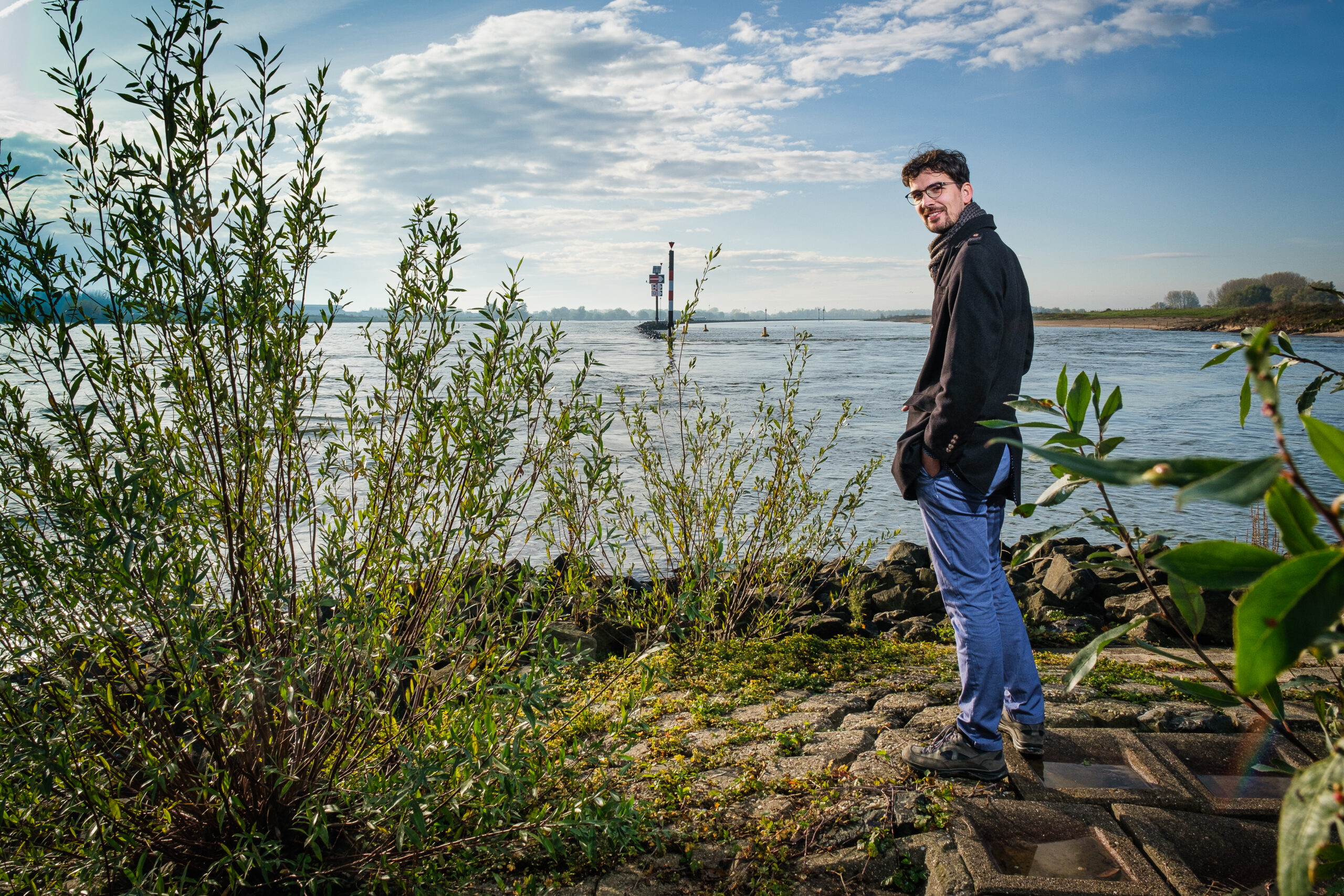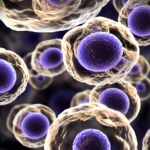A series of breakwaters is an outdated way of controlling water flow. The Dutch rivers are better off with longitudinal dams, shows a study by Timo de Ruijsscher. And nature benefits enormously from them too.
The major Dutch rivers that flow slowly through its lowlands are lined with breakwaters sticking out from their banks at regular intervals. That could change, though. Researcher Timo de Ruijsscher graduated with a PhD two weeks ago for a study on the effects of longitudinal dams along the Waal River. Three such dams line a stretch of 10 kilometres on the inside of the bends in the river between Wamel and Ophemert.
Longitudinal dams are made of basalt pebbles and run parallel with the flow of the river. So they are the opposite of breakwaters, which stick out from the riverbank, at right angles to the direction of the current. Longitudinal dams divide the river into a main channel and a side channel. This is clearly visible from the air on Google Maps. The longitudinal dams along the Waal were completed in 2015, the year in which De Ruijsscher started his doctoral research.
Longitudinal dams have a dual function: carrying off water faster at high water, and concentrating it in the shipping channel at low water. It is no surprise that longitudinal dams are good for keeping up the water discharge. Breakwaters cut across the current, creating resistance, while longitudinal dams steer the water. At low water, the dams narrow the river and the water is concentrated in the shipping channel, which therefore stays navigable for longer.
From swirling currents…
De Ruijsscher focussed his attention on the currents at the inlet to the side channel at Ophemert. Roughly one tenth of the Waal’s water flows through the side channel at that point. To give an impression of the volume involved: the size of the channel is comparable to the IJssel river. Even a casual observer can see that a lot goes on in the water in this channel: the fast-flowing water swirls around as it flows in, forms zones where it looks more placid and gradually calms down as it flows along the side channel. But what happens in the process?
To find that out, De Ruijsscher and the Directorate-General of Public Works took a lot of measurements (see inset) of the currents in both the main and the side channels. A form of echolocation was used as well to analyse the soil profile in the shipping channel. De Ruijsscher also built a scale model of the river and the longitudinal dam in the sedimentation lab on campus. The pilot in the Waal is a static system. To get a full picture of how such a system works, a scientist needs variation. ‘In theory, the system has a range of options to go for. For example, you can raise or lower the ‘sill’ threshold of the inlet, you can place it diagonally in relation to the current, and you can make it tail off. You can make it as exotic as you like. We studied these things in the lab.’
‘The overall picture is positive,’ says De Ruijsscher when summing up the conclusions. The longitudinal dam does not cause significant changes to the soil profile of the river. ‘A longitudinal dam could theoretically cause more dune formation in the main channel, which could lead to shallows forming. But that is not the case. We see things reorganizing themselves: sand banks shift, but that doesn’t make much difference to shipping.’
In the side channel, sediment piles up in some places, especially at low water. That could pose problems for leisure craft. ‘But strong currents in the winter wash most of this sediment away again. It is a very dynamic system, but overall not much changes. By adjusting the sill, you can regulate the volume of water and sediment that flow into the side channel very well.’
… to a calm flow
But there is a far-reaching effect on the ecology, as the Nijmegen ecologist Frank Collas has shown. ‘The system using breakwaters is very crude,’ says De Ruijsscher in his study. ‘Between the breakwaters, the water swirls in all directions. Every time a ship passes, the water is sucked back and then it smashes into the groyne. That is a very rough dynamic environment in which to survive. A longitudinal dam creates a more stable environment. There are no waves, the water flows calmly and the dam softens the noise of shipping. What is more, variation appears in the soil life in the side channel. A huge increase in indigenous species was already seen in the first year.’
A huge increase in indigenous species was already visible in the first year
So is that the end of the breakwaters?
The Public Works directorate is now considering making more use of longitudinal dams, says De Ruijsscher (who now works there). ‘For lowland rivers with sandy soils, it works well. But upstream in the Waal, towards Germany, the river beds are stonier. And downstream there is the effect of the tides to contend with. We don’t know what kind of effect a longitudinal dam would have there.’
| Dopler effect |
|---|
| De Ruijsscher used ADCP (Acoustic Doppler Current Profiler) to measure the current in the river. This apparatus makes use of the Doppler effect. It emits a sound pulse and listens to its reflection off the sediment particles floating in the water. Moving particles cause a change in the frequency of the sound. The difference in frequency between the emitted sound and the reflected sound reveals the speed of the particle and therefore the water. |

 Researcher Timo de Ruijsscher, with the side channel of the Waal at Ophemert in the background. Photo: Guy Ackermans
Researcher Timo de Ruijsscher, with the side channel of the Waal at Ophemert in the background. Photo: Guy Ackermans 

